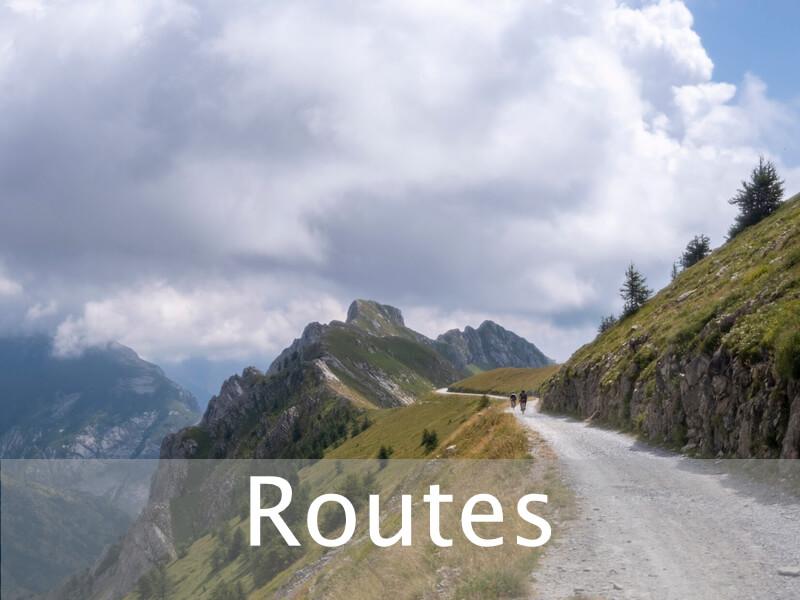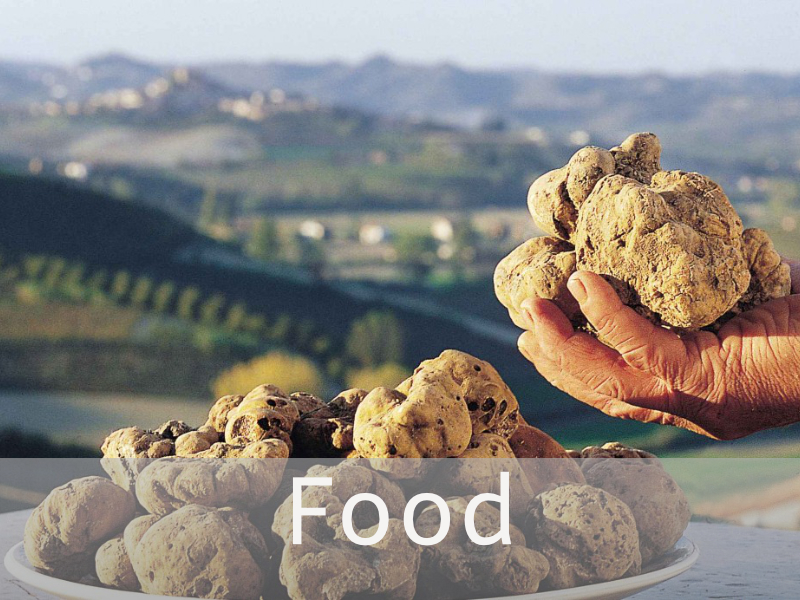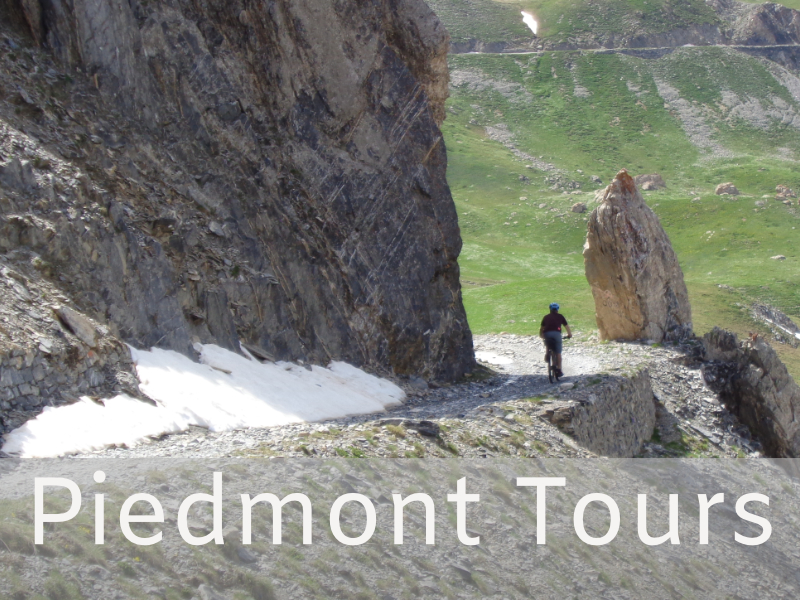Piedmont – Wines
NOTE: Unfortunately we are prevented, we are too fond of Piedmontese wines, you will have to bear that we speak well of them
Piedmont is located, as the name suggests, at the foot of the western Italian Alps and enjoys an unrivaled location among the best wine regions in the world.
It houses more DOCG wines than any other Italian region, including Barolo, Barbaresco and Barbera d’Asti.
Land famous for its austere, tannic and floral red wines produced with the Nebbiolo and Barbera vines.
Piedmont is often described as the “Burgundy” of Italy, a reputation due to its many small-scale, family wineries and a focus on quality, which sometimes borders on obsession. What Burgundy does with Pinot Noir, Piedmont does with Nebbiolo, here Piedmont Wines Overwiev.
BARBERA
Barbera, a dark-skinned variety from the Monferrato hills, is Piedmont’s workhorse grape and the region’s most widely planted variety. It is long been used to make everyday wines under a number of DOC titles, but is now behind a growing number of superlative wines in a range of styles and approaches of oak maturation. Piedmont’s best Barbera’s are sold under the Barbera del Monferrato, Barbera d’Asti or Barbera d’Alba titles. These are classically Italian in style: tangy, sour cherry-scented reds with good acidity and moderate complexity. Less astringently tannic than their Nebbiolo-based counterparts, Barbera wines are enjoyable (and marketable) within just a year or two of aging, giving them a competitive edge in today’s fast-paced, impatient wine market. This has made Barbera popular with both wineries and consumers.
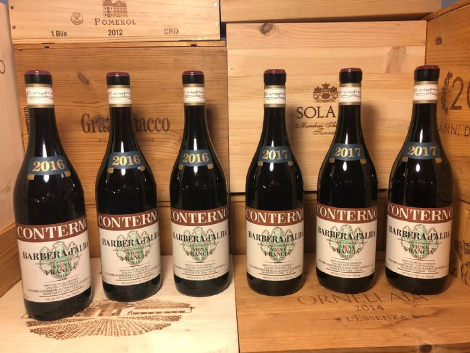
Giacomo Conterno “Vigna Francia” Barbera d’Alba — Barbera “Francia” is a red wine from one of the most prestigious vineyards from Piedmont, great consistency from a rustic grape variety.
Color: ruby red
Nose: berries, jam and raspberry with a hint of mineral
Taste: decided, juicy, intense, fresh and persistent
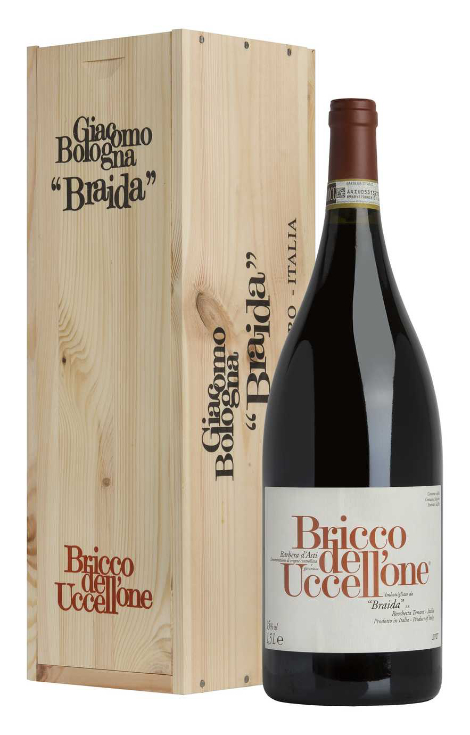
Braida «Bricco dell’Uccellone» Barbera d’Asti — “Bricco Uccellone” was born when Barbera was a light and simple wine, at that time (1981) the barrel was intended only for the most noble Barolo and Barbaresco, Joseph Bologna’s (aka Braida) revolutionized the way of making Barbera, exploiting the potential of the grape capable of giving red of infinite structure and truly remarkable aging potential.
Color: intense ruby red
Nose: notes of red fruit and spice, with notes of vanilla and liqu
Taste: generous, with great body and structure, beautiful character with a remarkable smoothness.
BARBARESCO
Barbaresco was awarded its DOCG classification in 1980. Its vineyards are situated in the Langhe, on the right-hand side of the Tanaro river and extending from the area northeast of Alba to the communes of Barbaresco, Neive and Treiso, and San Rocco Senodelvio. The dominant variety grown is Nebbiolo, but Dolcetto and Barbera also play a part. The vines are generally grown on limestone-rich marl soils. Similar to the soils of the Barolo and La Morra villages, at 650–1300ft above sea level on very steep, “pre-alpine” hills. They are situated on south-facing slopes for best exposure.
Regulations stipulate that Barbaresco must have a minimum alcohol content of 12.5 percent and undergo two years of aging, one of which must be spent in wooden barrels. For the added designation of “Riserva”, the ageing increases to four years, with one of those years in wood.
The most famous crus of the Barbaresco hill are: Ovello, Montefico, Montestefano, Pajè, Muncagota, Asili, Pora, Rabajà, Rio Sordo, Gallina, each of wines with different characteristics.
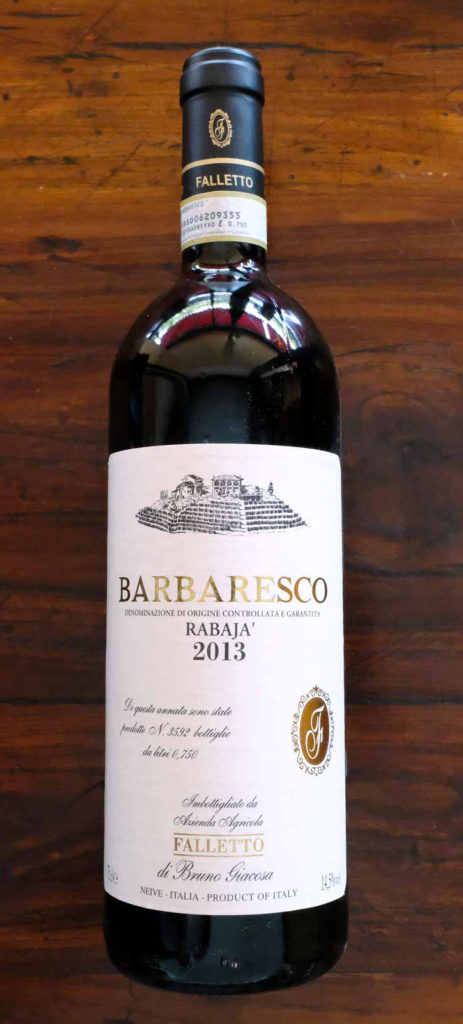
Barbaresco ‘Rabajà’ Bruno Giacosa — is an elegant, intense and complex red wine, born from old vines in the Rabajà cru and aged in oak barrels
Color: garnet red
Nose: intense, clean and elegant, with hints of dried flowers, ripe red fruit, plums, rosemary and sweet spices
Taste: robust, elegant and rich, with rounded tannins and a long finish
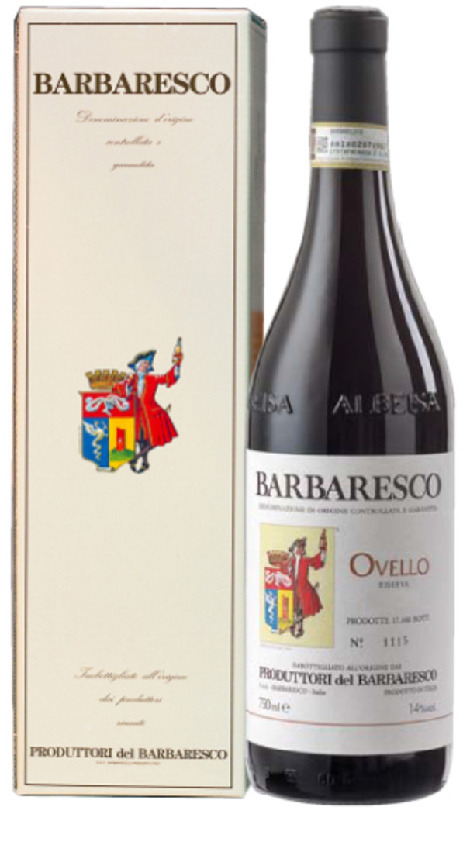
Barbaresco Riserva ‘Ovello’ Produttori del Barbaresco — From one of the most beautiful Italian cooperatives of producers, the reserve of one of the most beautiful cru of Barbaresco, still red wine, full-bodied, fruity, floral and spicy, aged in barrel
Color: bright ruby red with
garnet hue
Nose:
fruity scents of raspberries, blackberries and cherries with hints of rose,
licorice and light spice tobacco
Taste: intense, austere amd spicy, with elegant freshness
and solid tannins, very persistent
BAROLO
Barolo is a traditional hilltop village in the rolling hills of Piedmont, in north-western Italy. The vineyards and cellars have long been famous for the production of some of the best Italian red wines – mainly from the typical grape variety of the region, Nebbiolo. The fragrant, tannic Barolo wine is so revered that it was one of the three wines that obtained DOCG status on the day the classification was introduced in July 1980.
The wine-growing area of Barolo includes the villages of Castiglione Falletto, Serralunga d’Alba, Barolo, Monforte d’Alba, Novello, La Morra, Verduno, Grinzane Cavour, Diano d’Alba, Cherasco and Roddi. The soils and mesoclimates vary slightly between these villages, creating subtle differences between the wines produced by their vineyards, differences also enhanced by the skills and preferences of individual wine producers.
There are various Barolo vineyards which have achieved a sort of informal “cru” status, based on the official, structured model used in Burgundy. Some of best crus: Cannubi, Sarmazza, Brunate, Cerequio, Rocche, Monprivato, Villero, Lazzarito, Vigna Rionda, Bussia, Granbussia, Ginestra and Santo Stefano di Perno.
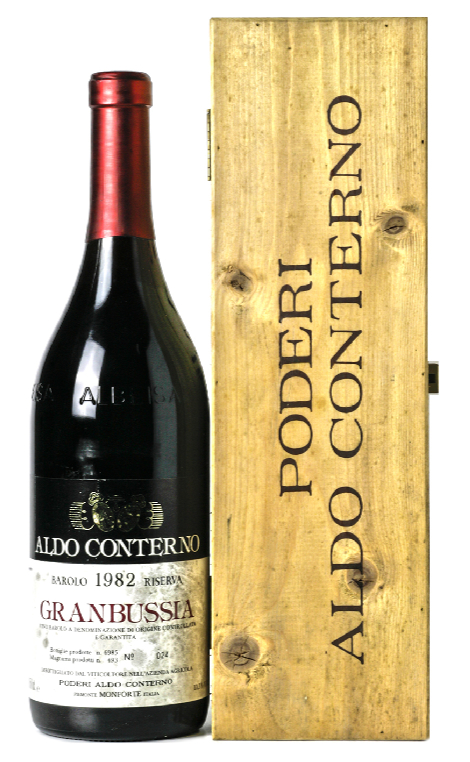
Barolo Riserva ‘Granbussia’ Aldo Conterno — is a symbol of Piedmont, one of the most famous and prestigious Barolo Riserva, born from the oldest and best vineyards of Bussia cru and aged for 9 years in big oak barrels and in bottle
Color: deep ruby red with garnet tints
Nose: very rich and complex, with scents of wild berries, dried roses, leather, tobacco, chocolate and many sweet spicl
Taste: robust, powerful, elegant, structured and deeo, with a never ending persistence.
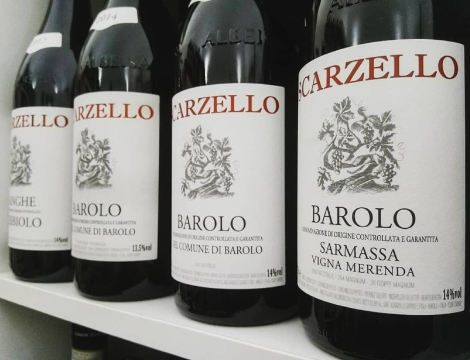
Barolo ‘Sarmassa Vigna Merenda’ Scarzello — is a striking example of what does it mean make Barolo in a classic way, starting from a meticulous work in the vineyard and with the unique use of big oak barrels. Very traditional Barolo made with old style artisanal methods
Color: bright garnet red
Nose: fine and austere, undergrowth, rhubarb, eucalyptus, tonka bean, sandalwood with earthy and salty echoes
Taste: silky and energic touch with mature and smooth tannins of balsamic and elegant persistence

